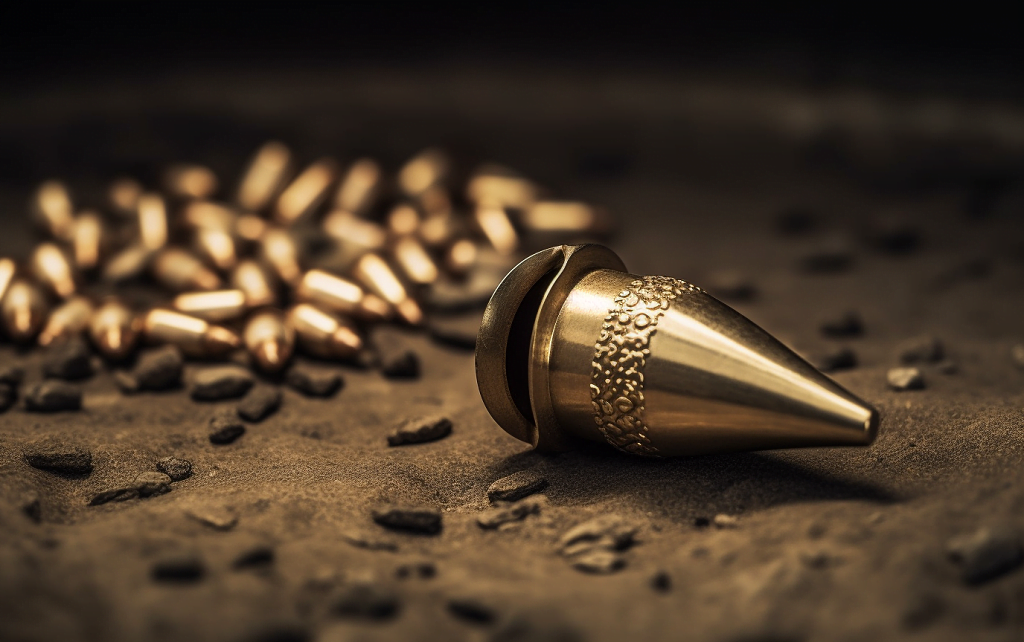Brass Catcher: A Practical Accessory for Shooting Enthusiasts

Table of Contents
Table of Contents
1. Introduction
When engaging in shooting activities, spent brass casings can quickly accumulate and create a mess on the range or in outdoor shooting areas. To address this issue, shooting enthusiasts have turned to a practical accessory known as a brass catcher. In this article, we explore the world of brass catchers, understanding their functionality, benefits, different types, and considerations when choosing one.
2. What is a Brass Catcher?
A brass catcher is a device designed to collect and contain spent brass casings ejected from a firearm during shooting. It is typically attached to the firearm itself or positioned near the ejection port to intercept the brass as it is expelled. By capturing the brass, it prevents it from scattering across the shooting range, making cleanup easier and more efficient.
3. How Does a Brass Catcher Work?
A brass catcher operates on a simple principle. It utilizes a mesh or fabric bag, a mounted frame, or magnetic components to capture and hold the spent brass casings. As the firearm is discharged, the ejected brass is redirected into the catcher, ensuring it is contained and collected in one place.
4. Benefits of Using a Brass Catcher
4.1 Convenience and Efficiency
One of the primary advantages of using this is the convenience and efficiency it provides. Instead of manually collecting brass casings from the ground or using a brass rod to sweep them into a pile, the catcher captures the casings as they are ejected, saving time and effort during cleanup.
4.2 Cost Savings
Brass casings can be valuable for reloading or resale purposes. By using this, you can significantly reduce the risk of losing or damaging casings, ultimately saving money in the long run. Additionally, it minimizes the need for extensive searching and sifting through dirt and debris to find every spent casing.
4.3 Environmental Considerations
Collecting spent brass casings is not only about personal convenience but also environmental responsibility. Brass catchers help contain the casings, preventing them from littering the shooting range or natural surroundings. This promotes a cleaner and safer shooting environment while respecting the natural surroundings.
5. Types of Brass Catchers
5.1 Mounted Brass Catchers
Mounted brass catchers are designed to attach directly to the firearm itself. They are typically firearm-specific and require installation on a Picatinny rail or other attachment points. Mounted brass catchers offer a streamlined and integrated solution, ensuring the catcher moves with the firearm during shooting.
5.2 Bag-style Brass Catchers
Bag-style brass catchers feature a fabric or mesh bag that is positioned near the ejection port to capture the ejected casings. They often have an adjustable mount or clamp that allows them to be secured to various firearm types. Bag-style catchers offer versatility and ease of use, allowing for quick attachment and detachment.
5.3 Magnetic Brass Catchers
Magnetic brass catchers utilize magnets to attract and hold the metal casings. Typically, shooters attach them to the side or bottom of the firearm, ensuring the magnets are in proximity to catch the brass. Users can easily transfer magnetic catchers between different firearms since they have a universal design.
6. Considerations When Choosing a Brass Catcher
6.1 Firearm Compatibility
Before purchasing a brass catcher, ensure compatibility with your specific firearm. Some catchers are designed for specific models or have limitations regarding calibers and ejection patterns. It’s important to choose a catcher that aligns with your firearm’s design and meets your shooting needs.
6.2 Ease of Attachment and Removal
Consider the ease of attachment and removal when selecting a brass catcher. Look for catchers that offer quick and secure attachment mechanisms, allowing for easy installation and removal without compromising the stability of the catcher during shooting.
6.3 Capacity and Durability
Assess the capacity of the brass catcher, as it determines the number of casings it can hold before requiring emptying. Additionally, consider the durability of the catcher, particularly if you engage in frequent shooting sessions. A robust and well-built brass catcher will withstand regular use and ensure longevity.
7. Tips for Using a Brass Catcher Effectively
- Ensure proper installation and secure attachment of the brass catcher before shooting.
- Regularly monitor and verify the proper position and correct functioning of this during shooting.
- Empty the brass catcher periodically to prevent casings from overflowing or interfering with the firearm’s operation.
- Practice proper firearm safety and muzzle discipline to avoid any unintended contact between the firearm and the brass catcher.
8. Conclusion
A brass catcher is a valuable accessory for shooting enthusiasts who seek a cleaner shooting experience and efficient brass collection. By utilizing it, shooters can streamline their cleanup process, save money on lost casings, and maintain an environmentally responsible shooting environment. Whether you opt for a mounted, bag-style, or magnetic brass catcher, consider compatibility, ease of use, and durability to make the most of this practical accessory.
9. FAQs
Q1. Can I use a brass catcher with any firearm?
Ans. Brass catchers have specific compatibility with certain firearms or firearm types.It’s important to ensure compatibility with your specific firearm before purchasing this.
Q2. Do brass catchers interfere with the firearm’s operation?
Ans. When properly installed and secured, brass catchers should not interfere with the firearm’s operation. However, it’s essential to regularly check the catcher to ensure it remains properly positioned during shooting.
Q3. Are brass catchers reusable?
Ans. Brass catchers are reusable accessories. They can be emptied, cleaned, and reattached for future shooting sessions.
Q4. Can I use a brass catcher for reloading purposes?
Ans. Certainly! Brass catchers offer benefits for reloading purposes by actively preventing the loss or damage of casings during shooting.
Q5. Are there any safety considerations when using a brass catcher?
Ans. Practicing proper firearm safety and muzzle discipline is crucial when using a brass catcher. Avoid any unintended contact between the firearm and the catcher, ensuring safe shooting practices at all times.







